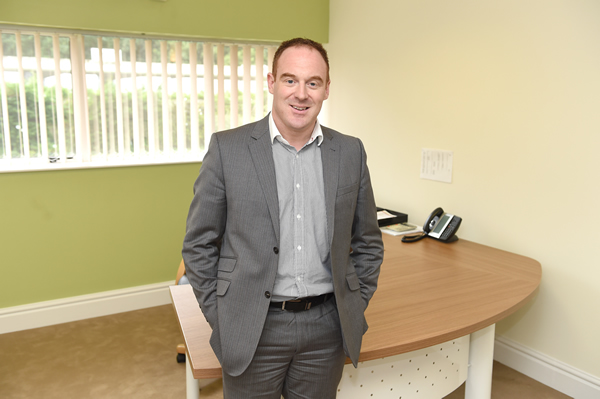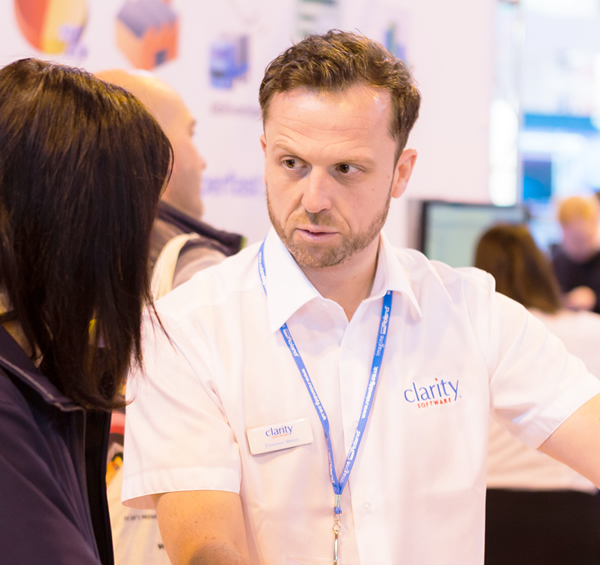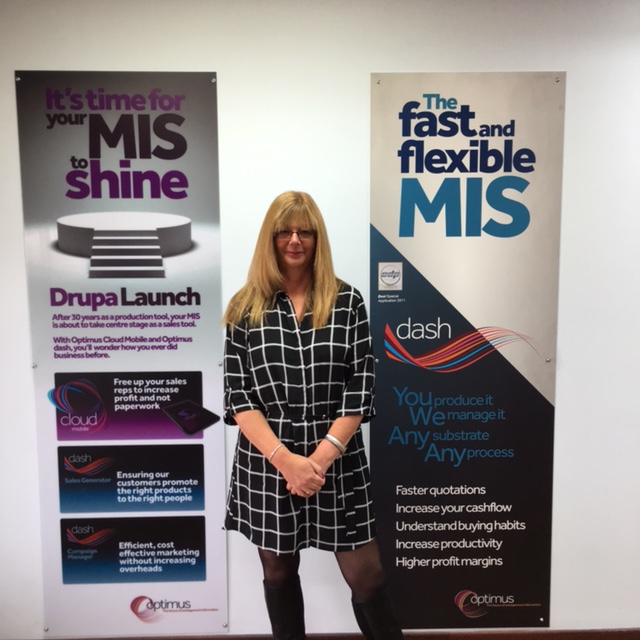Management information systems have a certain reputation among some large-format PSPs for failing to meet the sector’s specific needs. Image Reports asked four MIS providers some of the key questions PSPs regularly pose.
Are you one of those with doubts and niggles when it comes to management information systems? Perhaps integration is your bugbear – how to ensure your MIS marries with your other office systems. Maybe you are of the mind MIS cannot handle the production methodology and m2 estimating calculations essential for large-format PSPs. But are your perceptions accurate? We set out to determine just that.
Questions:
(1) What are your main modules for the large-format digital inkjet market? And can your system handle estimating in m2 and various standard wide-format finishing requirements?
(2) MIS is increasingly needs to integrate with other systems. What kind of ballpark timescales - and cost to the PSP - are we looking at to do that?
(3) How key is a W2P functionality within the MIS options you have for the large-format digital market?
(4) What advice/help do you give PSPs to help them get the best ROI from their MIS investment? (eg how to interrogate the system to understand areas of profit/loss)
(5) How is the Internet of Things impacting upon MIS product development for the print sector?
Answers:
Emerson Welch, Product director, Clarity
(1) Our digital print cost calculators are specialised for estimating any type of sheet and roll job and include costs of ink usage, machine running, labour and finishing requirements such as cutting, laminating, eyeleting, trimming and stitching. Our best-fit nesting plug-in to these calculators enables layout visuals at quote stage and our advanced stock functionality for rolls means you can split rolls to create new stock items with new serial IDs and allocate previously AWOL offcuts to new jobs to maximise margins. And we go one better than just handling m2 estimating by working out job requirements from a full roll and then offering flexibility to charge out in m2 and many other variations.
(2) Clarity’s integrated system focuses on the communication between the shop floor and sales so that customers can be kept updated with progress of jobs. Sales people have access to exactly which stage, workstation or status the job is at so they are confident when engaging with clients. This is available now and a forthcoming release of Clarity will take to this to the next level with a new dashboard to increase visibility of key production data.
(3) More and more people are using the internet to drive new sales into the business and Clarity has modules to accept Web enquiries and orders. This virtually automates the process from Web to shop floor with all bill of labour and bill of materials items allocated ready for the works order to be produced.
(4) Cost analysis in Clarity takes the real-time data feedback from the production and goods modules to drive actuals vs estimated costs in a simple dashboard view, which can be customised to fit the KPIs of the business.
(5) IoT is certainly an exciting term and we’re hitting the spot right now with machines already talking to our software and labour data being collected directly from workstations through our browser-based Shop Floor Data Collection module. Integration is key.
Nicola Bisset, Group MD, Optimus
(1) Optimus dash MIS has been purposely designed to manage any substrate and any process. We achieve this with the Optimus dash Sales Enquiry System (estimating which is purely process driven) aligned to the main Optimus Job System that provides visibility at all stages of the manufacturing cycle. Cost of ink usage can be incorporated into the dash System and the user can have influence and choice as to how ink calculations are presented. Since 2010 when dash was originally launched, we have yet to encounter an environment when we cannot handle a process including estimating in m2 and various standard wide-format finishing requirements - from cutting of rigid media to sewing of textiles.
(2) Optimus has been purposely built with an open architecture, to ensure that integration with the PSP’s chosen solutions can be achieved. The costs and timescales depend on a variety of factors including capabilities and structure of other vendors’ solutions and what level of integration is required. Optimus has successfully linked to a wide variety of solutions including financial, workflow and delivery systems.
(3) Although there are W2P solutions available for the LF market, our experience is that due to the complexity and diverse range of products produced by the LF PSP’s, the majority of their customers have not yet fully engaged with the opportunity of ordering online. Optimus has extensive capability with our own software and services and can also integrate with other best of breed products.
(4) Optimus dash contains an extensive range of standard reports - analysis tools and ‘alerts’ system to ensure that accurate, real time information is readily available to the user. Optimus does provide ROI studies for prospective customers to ensure there is an understanding of areas where improvements are achievable and the investment in MIS can show a measurable return.
(5) People have an expectation from internet usage that everything is fast, intuitive and easily accessible. This is exactly what Optimus dash MIS delivers.

Dawn Safford, Marketing, Shuttleworth
(1) Most large-format digital markets will use the core modules of an MIS to manage their workflow processes from estimating, production, delivery and invoicing. A good MIS not only manages the day-to-day workflow process but also incorporated a good CRM. Another key area for any large-format digital printer is quick accurate estimating, again a good MIS can help with this process. The Shuttleworth MIS estimating is flexible and has proven ability within many large-format businesses to calculate the complex prices required within wide-format work.
(2) The Shuttleworth MIS has been designed to integrate with a range of systems and equipment. This varies from links to various accounting systems through JDF/JMF integrations with the workflow systems and printing equipment, and then onto integrations with standard Web-to-print systems or bespoke ordering routines. Some of this integration is available out of the box as part of the standard system so timescales and costs are minimal. Bespoke Integrations’ times and costs depend on what exactly is being done.
(3) A trend towards integration and automation is also seeing an increase in large-format digital printers looking to integrate their MIS with a Web-to-print portal. The Shuttleworth open edge database allows us to easily integrate with any Web-to-print portal.
(4) Most modern MIS systems support a ‘business intelligence’ module for essential business information at the touch of a button. The Shuttleworth MIS includes a suite of standard reports and dashboards. These can be used to provide an abundance of information enabling the large-format digital printer to make strategic business decisions which can only be achieved with the support of a modern MIS.
(5) We are seeing an increase in bespoke development allowing our customers’ clients to access information directly from their MIS. Examples include reports, dashboards and websites where our customers’ clients can login to a portal to access information on stock orders, stock forecasts, and we have also designed an export to a website so our customers’ clients can access and create their own reports.

Keith McMurtrie, MD, Tharstern
(1) Our estimating module allows users to create and compare multiple quotes based on different equipment (including large-format equipment), production routes, processes and margins. Users can choose the most effective estimate for their business and pricing can be cost-plus or can be based on price lists that support unit or area pricing. Actual costs can then be analysed through a variety of reports and interactive dashboards.
(2) Because we’re solution based, every MIS we install is different but, as a ballpark, a printer could start with a core system at £8,495 and then add other functionality and integrations as they grow. Installations generally take between three and nine months, depending on the system.
(3) We’ve seen Web-to-print functionality become increasingly popular in the large-format market and we’re expecting even more interest over the next few years. The key thing here is to have your MIS and W2P software integrated so that the efficiencies created when clients create their own estimates and place their own orders isn’t lost by having to re-key information into the MIS.
(4) We provide five main pieces of advice: define your desired benefits (both financial and operational) before purchasing the MIS; define costs vs benefits; asses risk; end-to-end scenario test before you go live; be careful about the results of what you’re measuring.
(5) There’s clearly a general trend towards Cloud based software and, although this isn’t necessarily a route that MIS providers can take themselves yet, they’ll certainly have to have the capacity to integrate with other Cloud-based packages. Having an open API, as we do at Tharstern, helps in this area - our customers can very easily take advantage of any current or future print technologies that have a similarly open API. The increasing popularity of Cloud-based marketing automation software is an example of this and we’re working on a couple of integrations in this area at the moment.
{jathumbnail off}



